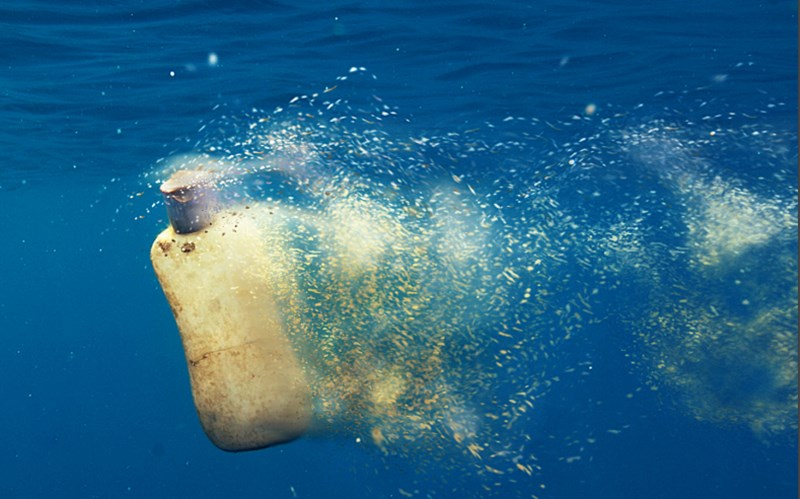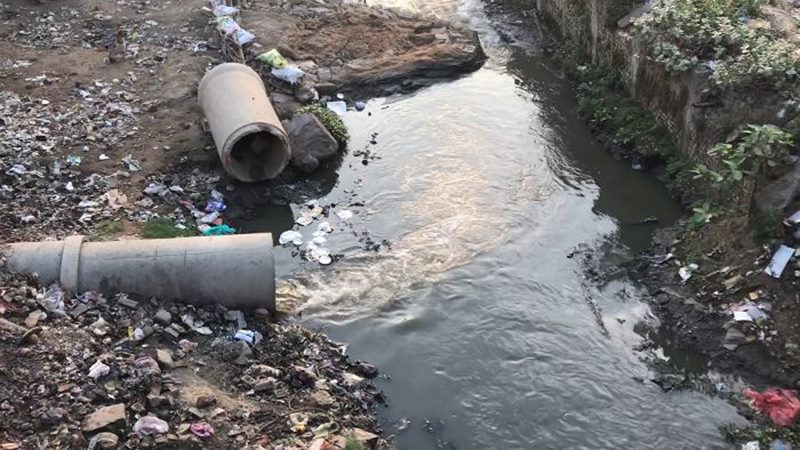Unholy contamination in the holy Ganges
A study conducted by a Delhi-based non-profit finds that the stretch of Ganges flowing in Varanasi has the highest amount of microplastics; even more than in Kanpur and Haridwar. Experts say that microplastics could have entered into the food chain.


There were 40 different kinds of polymers that were detected in the microplastics found in Ganga at Haridwar, Kanpur and Varanasi. Photo: Toxics Link
The stretch of Ganga, as it flows through the holy city of Varanasi in Uttar Pradesh, is the most polluted by mircoplastics, more than Kanpur and Uttarakhand’s Haridwar. Varanasi, also regarded as the spiritual capital of India, attracts a large number of pilgrims who travel all the way to the city to bathe in the river there.
But, a recent study by Delhi-based non-profit, Toxics Link, revealed that despite being considered sacred, the waters of the river running through Varanasi were highly polluted.
The study titled ‘Quantitative analysis of Microplastics along River Ganga’ published on July 22 pointed out Assi Ghat in Varanasi as having the maximum presence of microplastics, which could be due to the drainage of sewage and industrial effluents directly into the Ganga.
Logically, Kanpur, 330 kilometres away from Varanasi is where one expected the pollution to be more on account of its many tanneries discharging toxic effluents contaminating not just the groundwater there but also the river.

But the study showed up otherwise.
“Leather is a different polymer. I am sure water quality in Kanpur is much worse. But in terms of microplastics, Varanasi has the highest content. Plastic waste by tourists and pilgrims either on the river bank or in the river are the reasons why we found more microplastics in Varanasi compared to Kanpur,” Delhi-based Priti Mahesh, chief programme coordinator, Toxics Link, told Gaon Connection.
There were 40 different kinds of polymers that were detected in the microplastics found in Ganga at Haridwar, Kanpur and Varanasi. These include polyacetylene (used in manufacturing electronics and thin films), PVP or polyvinyl pyrrolidone (used in cosmetics and pharmaceutical industry), PVC or polyvinyl chloride (used in pipes, wires, cables and medical devices).
“We found different kinds of plastic waste in the river such as water bottles, polythene bags, body wash in all three cities. Big plastics objects are broken into microplastics and contaminate water,” added Mahesh. Not only this, the study shows several types of rubber and tires were also indiscriminately dumped into the river.
Also Read: ‘It is poison, not water, that comes out of the handpumps’
The researchers collected the samples from the Ganges in February early this year. They found the number of microplastics detected in the surface water of the river in Varanasi was 2.42±0.405 microplastics per cubic metre. On the other hand the number of microplastics detected in surface water of river Ganga in Kanpur and Haridwar were 2.16±0.500 microplastics and 1.30±0.518 per cubic metre, respectively.

The water bodies should contain no microplastics at all. “Ganga is the source for drinking water for many. Now microplastics are reaching the food chain through this water that is also used for irrigation which means it is going to the soil,” Mahesh pointed out.
Also Read: The Kashi Vishwanath corridor in Varanasi causes ripples of alarm
Health concerns
According to the World Health Organization (WHO), microplastics and its impact on marine bodies and the environment is documented through various research studies. But there is hardly any work for assessing its impact on human health.
However, the public health body shows that toxicology studies in rats and mice reported some impact including inflammation of the liver.
“Considering its property to absorb toxic pollutants, microplastics can have a serious impact on human health,” the Toxic Link study stated.
The chemicals in microplastics are likely to affect the reproductive, immune, and nervous system. They also threaten the health of foetuses, children, and can even cause cancer.
“Global studies suggest that microplastics have been found in the human body. This is contamination of the ecosystem and food chain. It is coming back to the human body and marine animals causing harm,” said Mahesh, adding that “Microplastic is still a new area and not many studies are being done.”

Wastewater treatment plants won’t filter out microplastics
An important point source for microplastic pollution is the discharge from wastewater treatment plants.
“Waste management plays a key role here. If plastic waste is getting littered around the river body or in the river, it is going to stay there and break down into smaller particles,” said Mahesh.
“Wastewater treatment plants are unable to filter out microplastics. Water is treated before it is supplied for drinking purpose. But the amount of microplastics is so humongous that microplastics could not be removed. Also, these plants are not hundred per cent efficient,” she added.
Also Read: The Pandemic and Pollution: Handling the packaging waste of increased online shopping
The Toxics Link study pointed out that untreated municipal and industrial discharge makes up approximately 75 per cent of the pollution load of the Ganga. Most plastic litter originates from land-based sources and inland areas (urban runoffs) and enters the marine environment through rivers.
Since the early eighties, the central government has launched several plans and spent several millions of rupees for improving the water quality in the Ganga, “but these efforts resulted in little success,” said the study.

One such project is Namami Gange. Launched in 2014, the mission aimed to arrest the pollution in river Ganga and revive it. But experts suggest projects like the Namami Gange do not consider microplastics as one of its ‘concerns’ to prevent water pollution. “Unfortunately, not any of these projects are focused on contamination at micro level,” said Mahesh.
Addressing the Indian community at Madison Square Garden in New York in 2014, Prime Minister Narendra Modi had said: “If we are able to clean it (river Ganga), it will be a huge help for the 40 per cent population of the country. So, cleaning the Ganges is also an economic agenda.”
However, the Toxics Link study shows that the Ganga in Varanasi, also the constituency of PM Modi, continues to be defiled and contaminated, with no end in sight.
Also Read: Is the Ganga clean after the lockdown?

